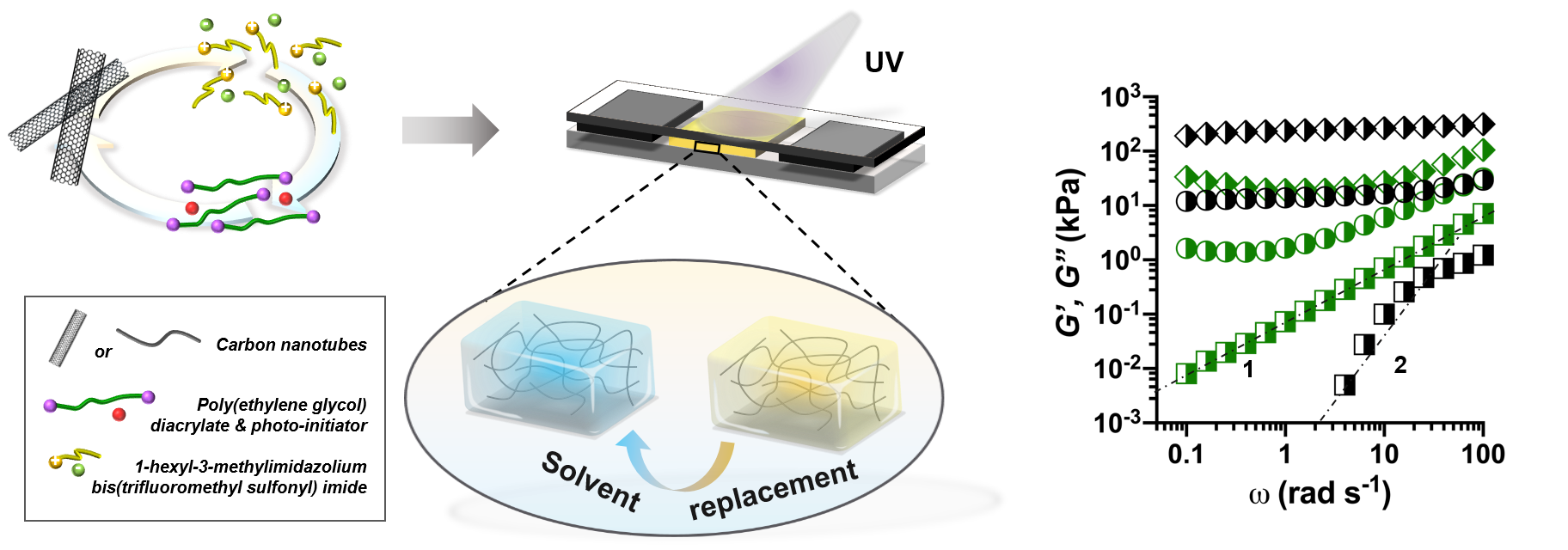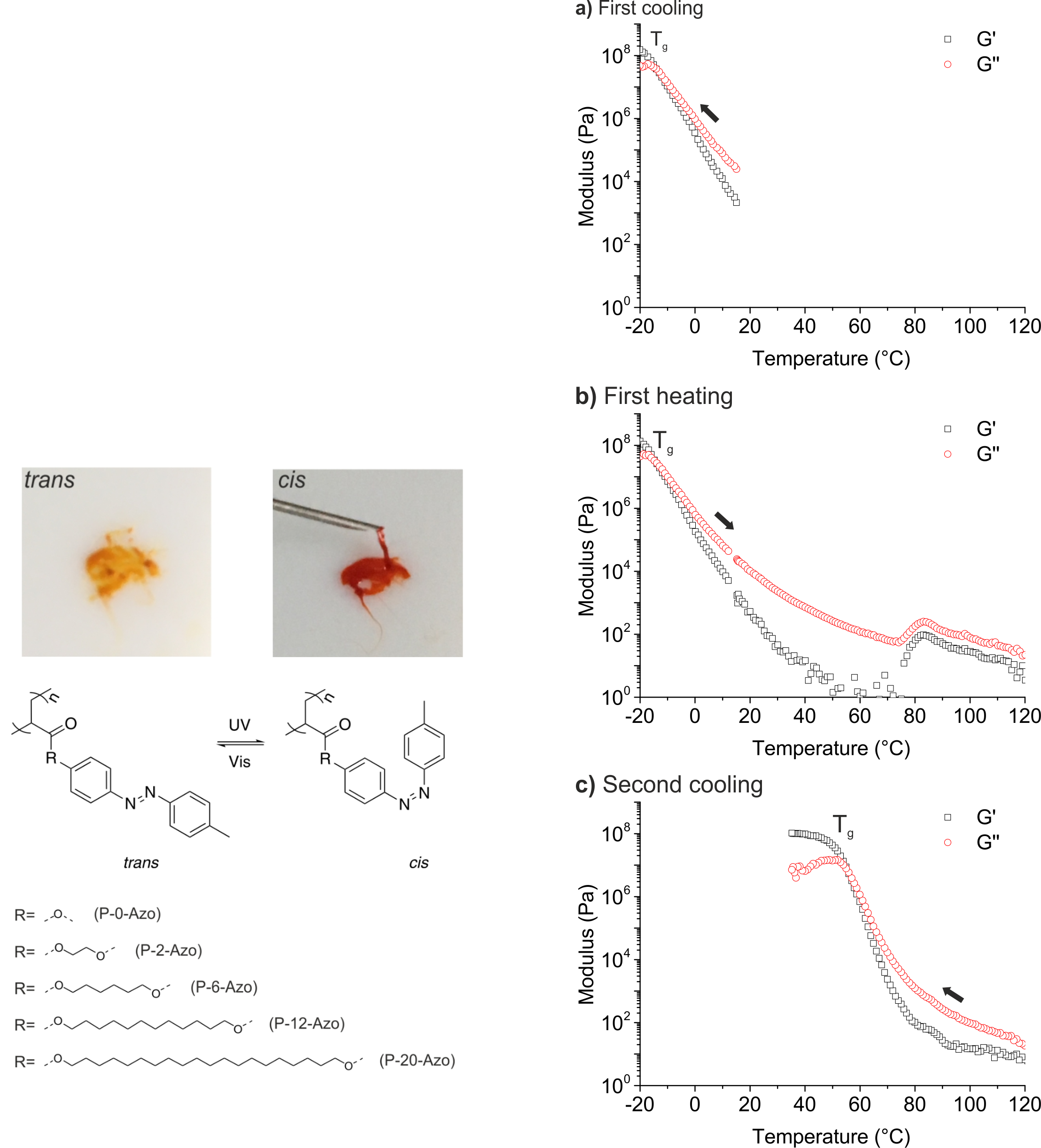The
fast developments in the synthetic chemistry during the last decades
have made possible the preparation of a large variety of macromolecules
with controlled topology and functionality. Our
work is focused on understanding the relation between
the molecular architecture, composition and processing on one hand and
the morphology and thermo-mechanical properties of macromolecular
materials on the other hand. Such understanding is not only of
fundamental interest, but will also help to predict the properties and
design new materials for specific applications. In this endeavor we
cooperate extensively with synthetic chemistry partners. Commonly
studied systems include photo-responsive polymers, nanocomposites,
synthetic and biological gels.
For
example, recently we prepared CNT–hydrogel composites by in situ
polymerization of poly(ethylene glycol) (PEG) around a preformed carbon
nanotube (CNT) meshwork. We found that the composites facilitate
long-term survival and differentiation of neural stem cells. The
formation of the CNT meshwork was studied by monitoring the frequency (ω) dependence of the real (G′) and imaginary (G″) parts of the complex shear moduli of gel precursors (PEG solutions) with different CNT content. The
frequency response of the precursor of pure PEG hydrogels reveald non-Newtonian liquid behavior, characterized by
a terminal region with G′(ω) ~ ω2, G″(ω) ~ ω1.
Upon
incorporating smal fraction of CNTs, a plateau with G′ >
G″ was observed at low frequencies, indicating the formation of
weak
CNTs percolation meshwork. At higher CNT content, G′ > G″ over
a wider range of frequency reflecting the response of a strong CNTs
meshwork. After PEG crosslinking, this meshwork is preserved in the final composites.

Poly(ethylene glycol) diacrylate with a photoinitiator was added to the mixtures and they were used as precursors. The precursors were sandwiched between two glass slides with
two cover slides used as spacers. The CNT–PEG hydrogel composites with varying CNT content were prepared by UV-induced polymerization followed by solvent replacements.
Right: frequency (ω) dependence of the G′ (black) and G″ (green) for gel precursors (PEG solutions) with a CNT content of: 0 (squares), 5 (circles) and 20 (rombi) arbitrary units.
In another example, in close cooperation with Si Wu (MPIP and USTC in Hefeie,
China) we studied the photoinduced solid-to-liquid transition in
azobenzene-containing polymers. The temperature dependences of the
shear moduli G' and G'' clearly show that the glass temperature (Tg) of cis-azopolymers is well below the room temperature, while the Tg of trans-azopolymers is well above the room temperature. Furthermore,
we found that the length of the spacer between the polymer backbone and
the azobenzene group on the side chain has major influence on thephotoinduced solid-to-liquid transition.

and the loss modulus (G′′, red circles) for a cis-P-12-Azo during first cooling, first heating and the second cooling cycles. Note that during heating,
the cis-P-12-Azo thermally switched to trans-P-12-Azo.
|

